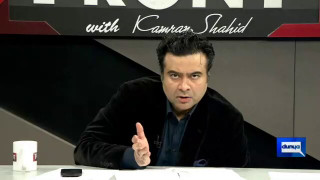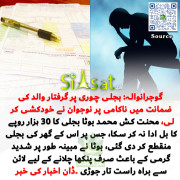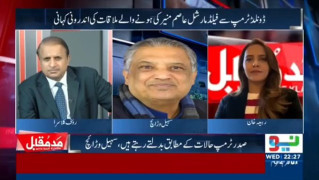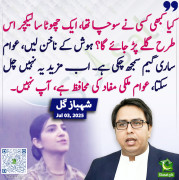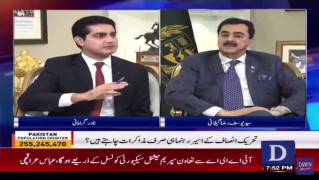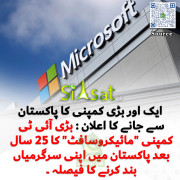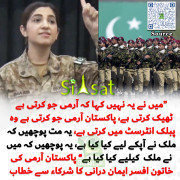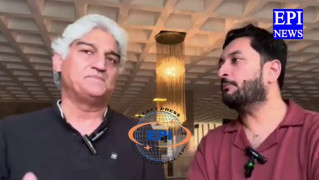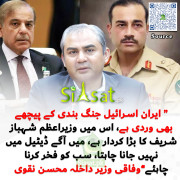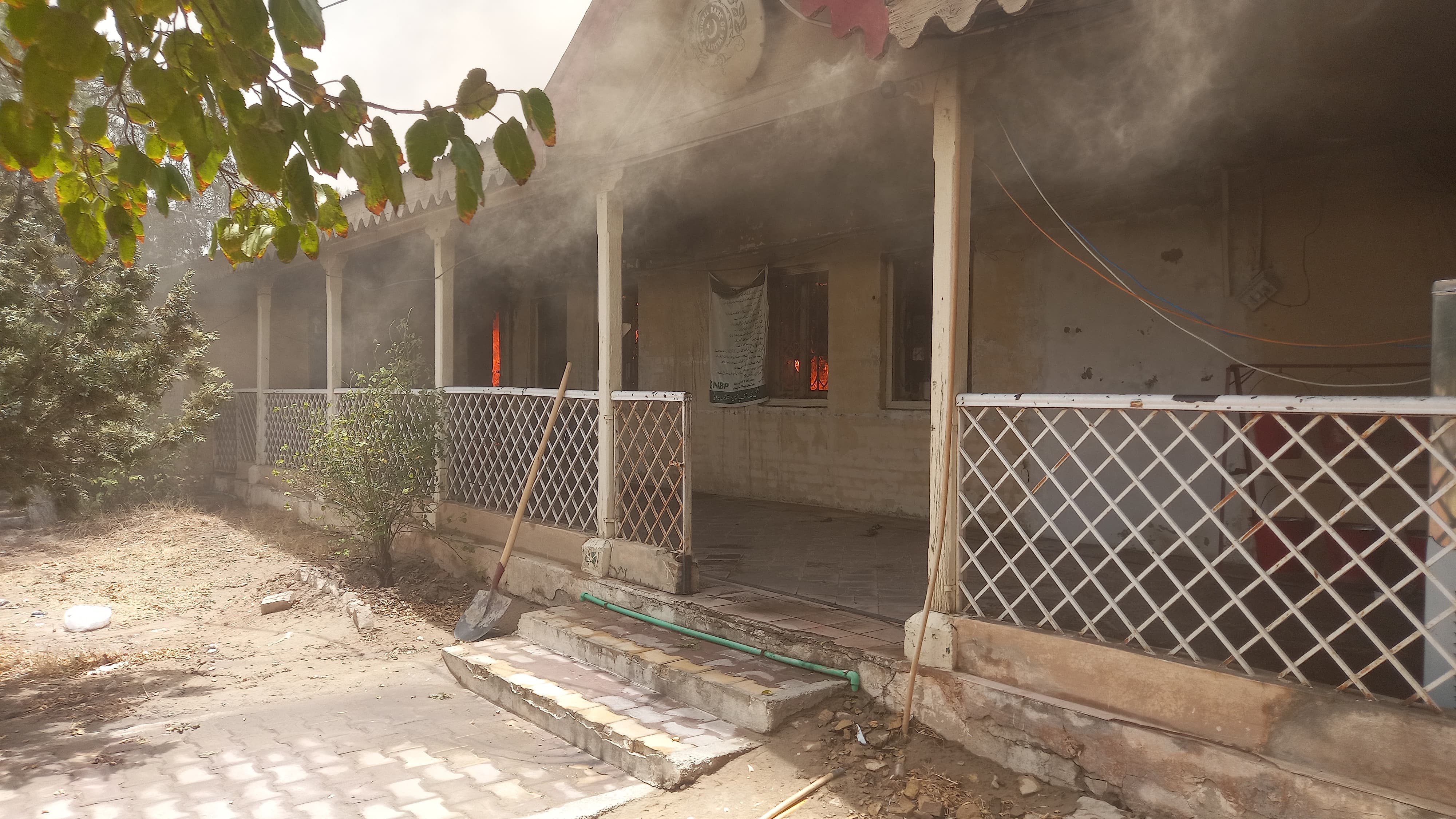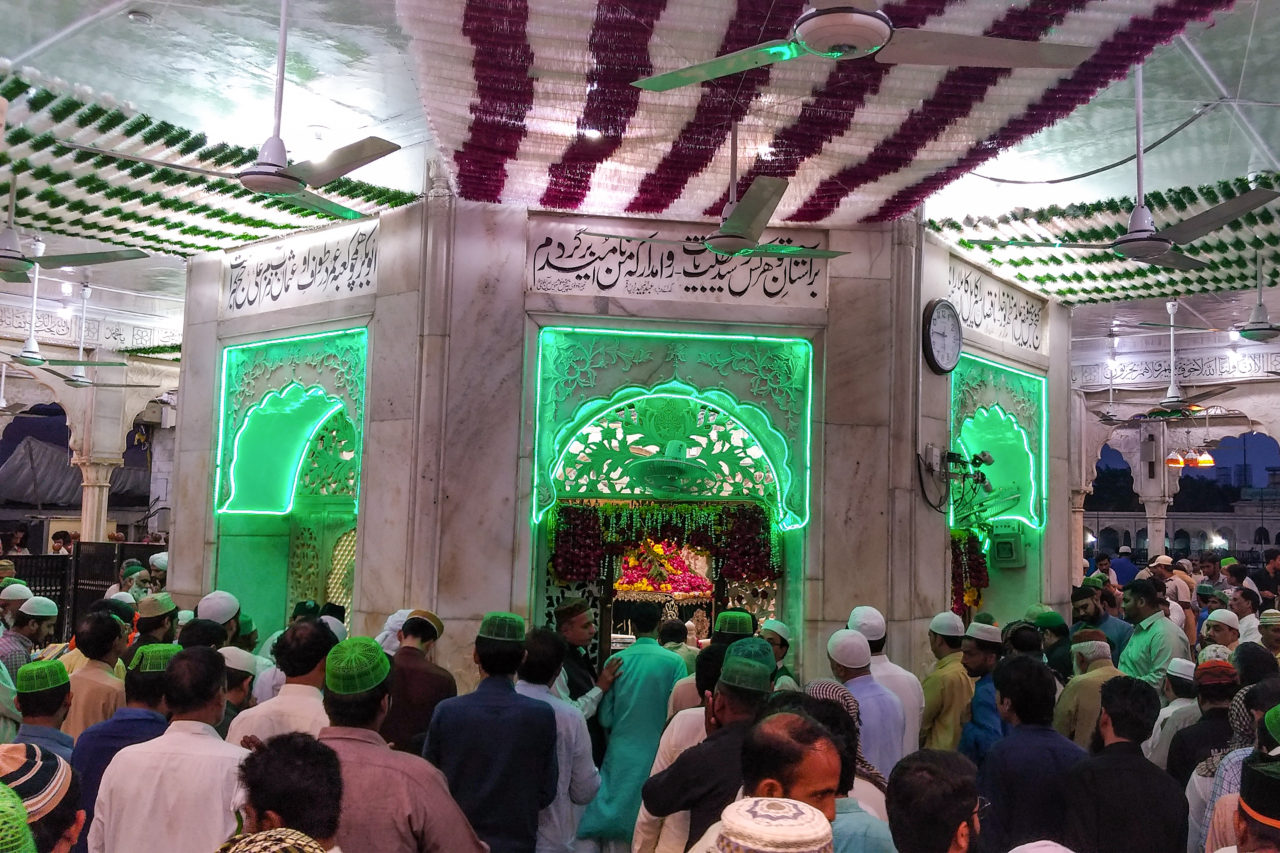Remembering the 1979 seige of Holy Kaaba
The Grand Mosque Seizure on November 20, 1979, was an armed attack and takeover by armed Islamist dissidents of the Al-Masjid al-Haram in Mecca, Saudi Arabia, the holiest place in Islam. The insurgents declared that the Mahdi, or redeemer of Islam, had arrived in the form of one of the insurgents' leaders, Abdullah Hamid Mohammed Al-Qahtani and called on Muslims to obey him.
The seizure shocked the Islamic world as hundreds of pilgrims present for the annual hajj were taken hostage, and hundreds of militants, security forces and hostages caught in crossfire were killed in the ensuing battles for control of the site. The siege ended two weeks after the takeover began with militants cleared from the mosque.[1]
Following the attack, the Saudi state implemented stricter enforcement of Islamic code.[2]
The seizure was led by Juhaiman ibn Muhammad ibn Saif al Utaibi, who belonged to a powerful family of Najd. He declared his brother-in-law Muhammad bin abd Allah al-Qahtani to be the Mahdi, or redeemer of Islam, whose coming at endtimes is foretold in many ahaadith of Muhammad(S.A.W. Although one of the essential signs to know the Mahdi is that he is a descendant of Muhammad, Muhammad bin abd Allah al-Qahtani was not a descendant of the Prophet of Islam, since he belongs to Al-Qahtani tribe. However, the fanatics overlooked this by relying on the fact that Al-Qahtani's name and his father's name are identical to the Prophet's name and father, and they used one of the Prophet's sayings "His and his father's names were the same as Muhammad's and his father's, and he had come to Mecca from the north" to justify their opinion. Furthermore, the date of the attack, November 20, 1979, was the first day of the year 1400 according to the Islamic calendar, which according to another hadith, was the day that the Mahdi would reveal himself.[3]
Juhaiman Saif al Otaibi was from "one of the foremost families of Najd. His grandfather had ridden with Abd al Aziz in the early decades of the century."[4] He was a preacher, a former corporal in the Saudi National Guard, and former student of revered conservative Sheikh Abdel Aziz al Baaz, who went on to become the Grand Mufti of Saudi Arabia. Juhaiman had turned against al Baz, "and began advocating a return to the original ways of Islam, among other things; a repudiation of the West; an end of education of women; abolition of television and expulsion of non-Muslims." [5] He proclaimed that "the ruling Al Saud dynasty had lost its legitimacy, because it was corrupt, ostentatious and had destroyed Saudi culture by an aggressive policy of Westernization."[6]
Otaibi and Qahtani had met while being imprisoned together for sedition, when Otaibi claimed to have a vision sent by God telling him that Qahtani was the Mahdi. Their declared goal was to institute a theocracy in preparation for the imminent apocalypse. Many of their followers were drawn from theology students at the Islamic University in Medina, which was known as a center of the Muslim Brotherhood. Other followers came from Yemen, Kuwait, and Egypt and also included some Muslim African-Americans. The followers preached their radical message in different mosques in Saudi Arabia without being arrested.[7] The government was reluctant to confront religious extremists. Members of the ulema cross-examined Otaibi and Qahtani for heresy, but they were subsequently released as being traditionalists harkening back to the Ikhwan, like Otaibi's grandfather, and not a threat.[8]
Because of donations from wealthy followers, the group was well-armed and trained. Some members, like Otaibi, were members of the National Guard.[9] Some National Guard troops sympathetic to the insurgents infiltrated weapons, ammunition, gas masks, and provisions into the mosque compound over a period of weeks before the new year.[10] Automatic weapons were stolen from National Guard armories, and the supplies were hidden in the hundreds of tiny underground rooms under the mosque that were used as hermitages.[11]
source:
http://en.wikipedia.org/wiki/Grand_Mosque_Seizure
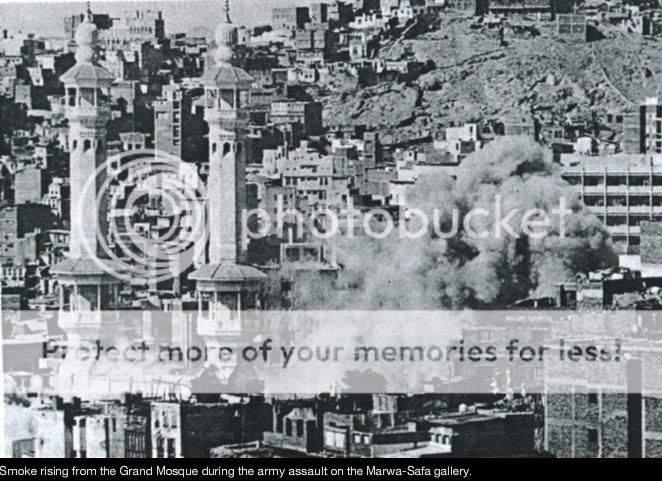

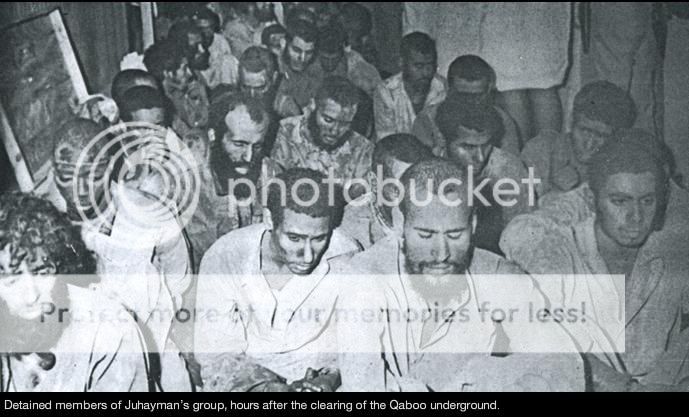
Below is the Kharji leader look at his face he claimed to be imam mahdi.

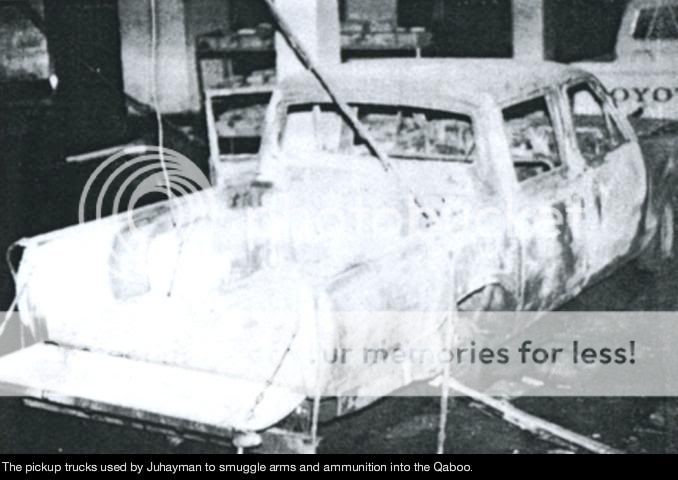
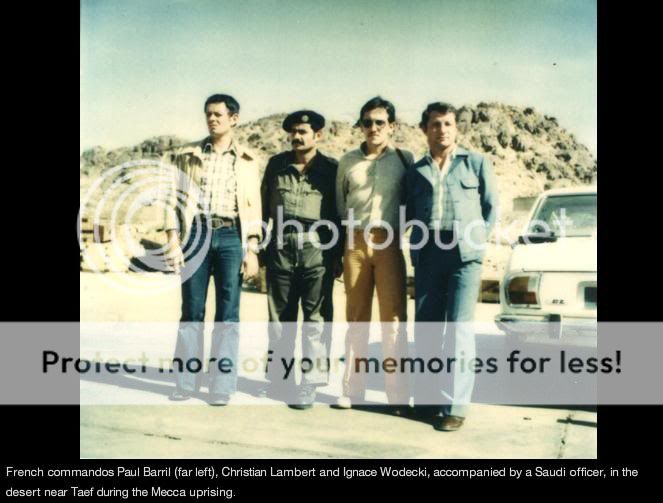

A Video interview of the book writer
[video=google;63320228838951049]http://video.google.com/videoplay?docid=63320228838951049#[/video]
Have look at the pictures thoroughly its the most sacred mosque of the world
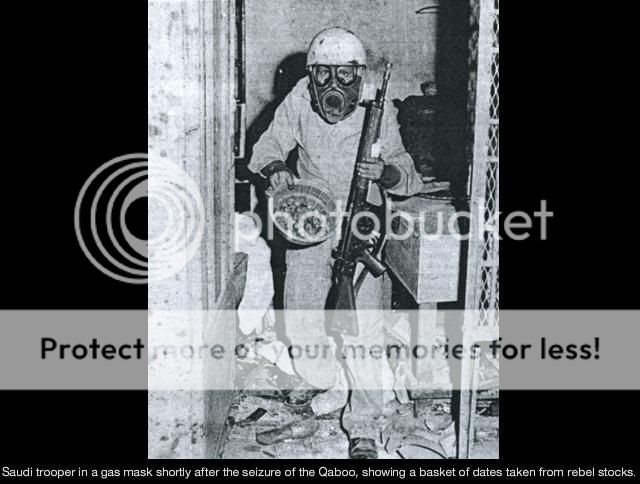
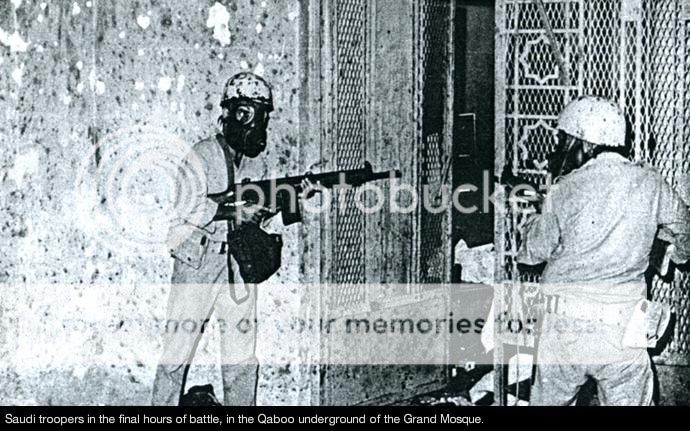

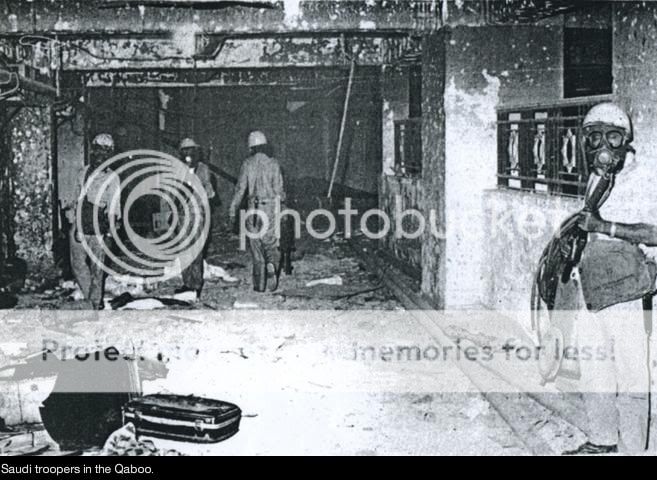
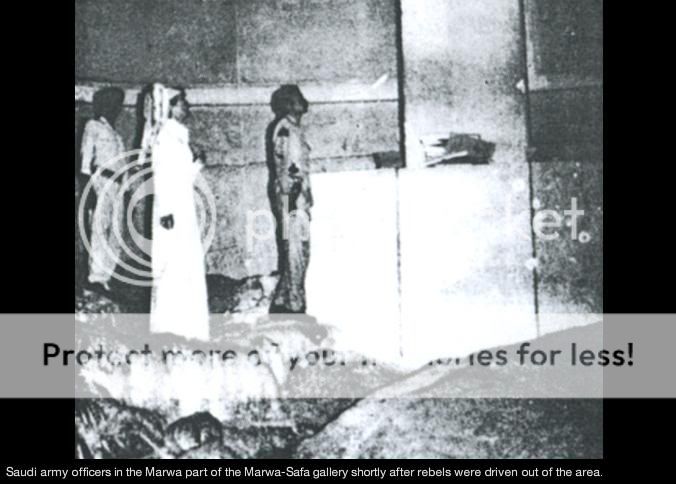
so stop using the propag@nd@ of Lal Masjid
The Grand Mosque Seizure on November 20, 1979, was an armed attack and takeover by armed Islamist dissidents of the Al-Masjid al-Haram in Mecca, Saudi Arabia, the holiest place in Islam. The insurgents declared that the Mahdi, or redeemer of Islam, had arrived in the form of one of the insurgents' leaders, Abdullah Hamid Mohammed Al-Qahtani and called on Muslims to obey him.
The seizure shocked the Islamic world as hundreds of pilgrims present for the annual hajj were taken hostage, and hundreds of militants, security forces and hostages caught in crossfire were killed in the ensuing battles for control of the site. The siege ended two weeks after the takeover began with militants cleared from the mosque.[1]
Following the attack, the Saudi state implemented stricter enforcement of Islamic code.[2]
The seizure was led by Juhaiman ibn Muhammad ibn Saif al Utaibi, who belonged to a powerful family of Najd. He declared his brother-in-law Muhammad bin abd Allah al-Qahtani to be the Mahdi, or redeemer of Islam, whose coming at endtimes is foretold in many ahaadith of Muhammad(S.A.W. Although one of the essential signs to know the Mahdi is that he is a descendant of Muhammad, Muhammad bin abd Allah al-Qahtani was not a descendant of the Prophet of Islam, since he belongs to Al-Qahtani tribe. However, the fanatics overlooked this by relying on the fact that Al-Qahtani's name and his father's name are identical to the Prophet's name and father, and they used one of the Prophet's sayings "His and his father's names were the same as Muhammad's and his father's, and he had come to Mecca from the north" to justify their opinion. Furthermore, the date of the attack, November 20, 1979, was the first day of the year 1400 according to the Islamic calendar, which according to another hadith, was the day that the Mahdi would reveal himself.[3]
Juhaiman Saif al Otaibi was from "one of the foremost families of Najd. His grandfather had ridden with Abd al Aziz in the early decades of the century."[4] He was a preacher, a former corporal in the Saudi National Guard, and former student of revered conservative Sheikh Abdel Aziz al Baaz, who went on to become the Grand Mufti of Saudi Arabia. Juhaiman had turned against al Baz, "and began advocating a return to the original ways of Islam, among other things; a repudiation of the West; an end of education of women; abolition of television and expulsion of non-Muslims." [5] He proclaimed that "the ruling Al Saud dynasty had lost its legitimacy, because it was corrupt, ostentatious and had destroyed Saudi culture by an aggressive policy of Westernization."[6]
Otaibi and Qahtani had met while being imprisoned together for sedition, when Otaibi claimed to have a vision sent by God telling him that Qahtani was the Mahdi. Their declared goal was to institute a theocracy in preparation for the imminent apocalypse. Many of their followers were drawn from theology students at the Islamic University in Medina, which was known as a center of the Muslim Brotherhood. Other followers came from Yemen, Kuwait, and Egypt and also included some Muslim African-Americans. The followers preached their radical message in different mosques in Saudi Arabia without being arrested.[7] The government was reluctant to confront religious extremists. Members of the ulema cross-examined Otaibi and Qahtani for heresy, but they were subsequently released as being traditionalists harkening back to the Ikhwan, like Otaibi's grandfather, and not a threat.[8]
Because of donations from wealthy followers, the group was well-armed and trained. Some members, like Otaibi, were members of the National Guard.[9] Some National Guard troops sympathetic to the insurgents infiltrated weapons, ammunition, gas masks, and provisions into the mosque compound over a period of weeks before the new year.[10] Automatic weapons were stolen from National Guard armories, and the supplies were hidden in the hundreds of tiny underground rooms under the mosque that were used as hermitages.[11]
1 Benjamin, The Age of Sacred Terror (2002) p.90
2 Wright, Sacred Rage, (2001), p.155
3 Benjamin, The Age of Sacred Terror, (2002) p.90
4 Mecca - 1979 Juhaiman ibn Muhammad ibn Saif al Utaibi, globalsecurity.org
5 Wright, Sacred Rage, (2001), p.152
6 Military, Mecca, 1979 Juhaiman ibn Muhammad ibn Saif al Utaibi, globalsecurity.org
7 Wright, Looming Tower, (2006), p.88-9
8 a b Wright, Looming Tower, (2006), p. 103 - softcover
9 Wright, Looming Tower, (2006), p. 102 - softcover
10 Benjamin, The Age of Sacred Terror, (2002), p.90
11a b Wright, Looming Tower, (2006), p. 104 - softcover
source:
http://en.wikipedia.org/wiki/Grand_Mosque_Seizure



Below is the Kharji leader look at his face he claimed to be imam mahdi.




A Video interview of the book writer
[video=google;63320228838951049]http://video.google.com/videoplay?docid=63320228838951049#[/video]
Have look at the pictures thoroughly its the most sacred mosque of the world





so stop using the propag@nd@ of Lal Masjid
Last edited:

